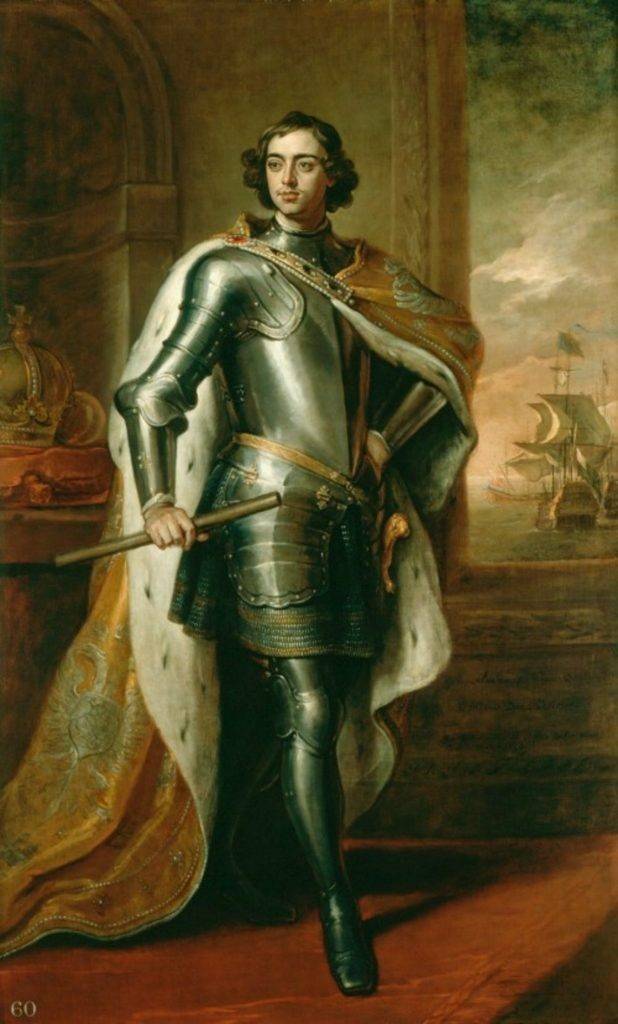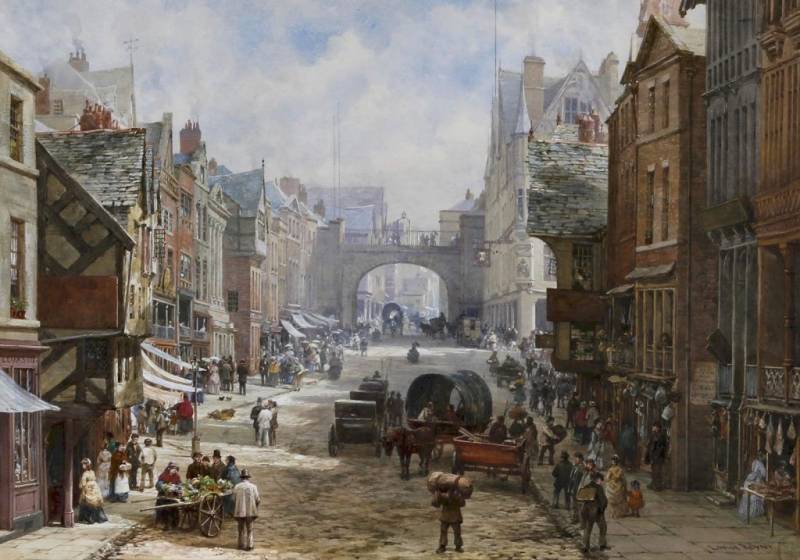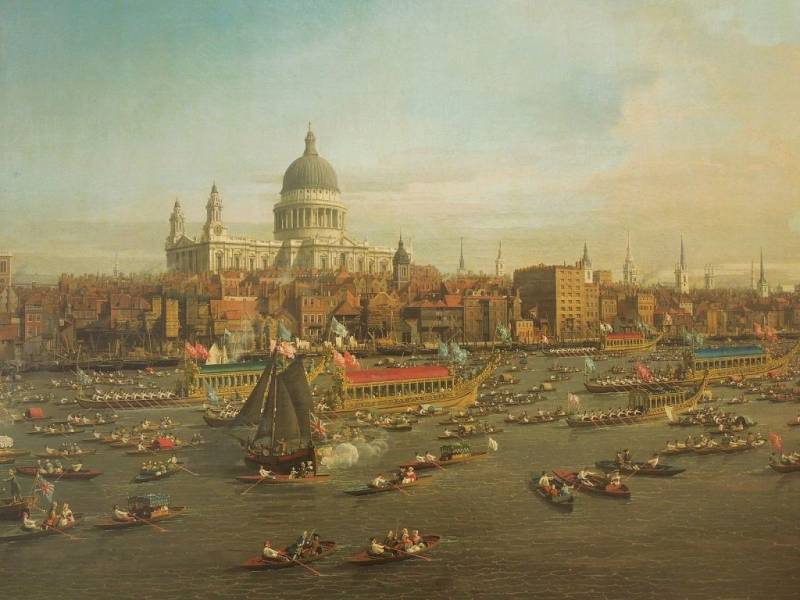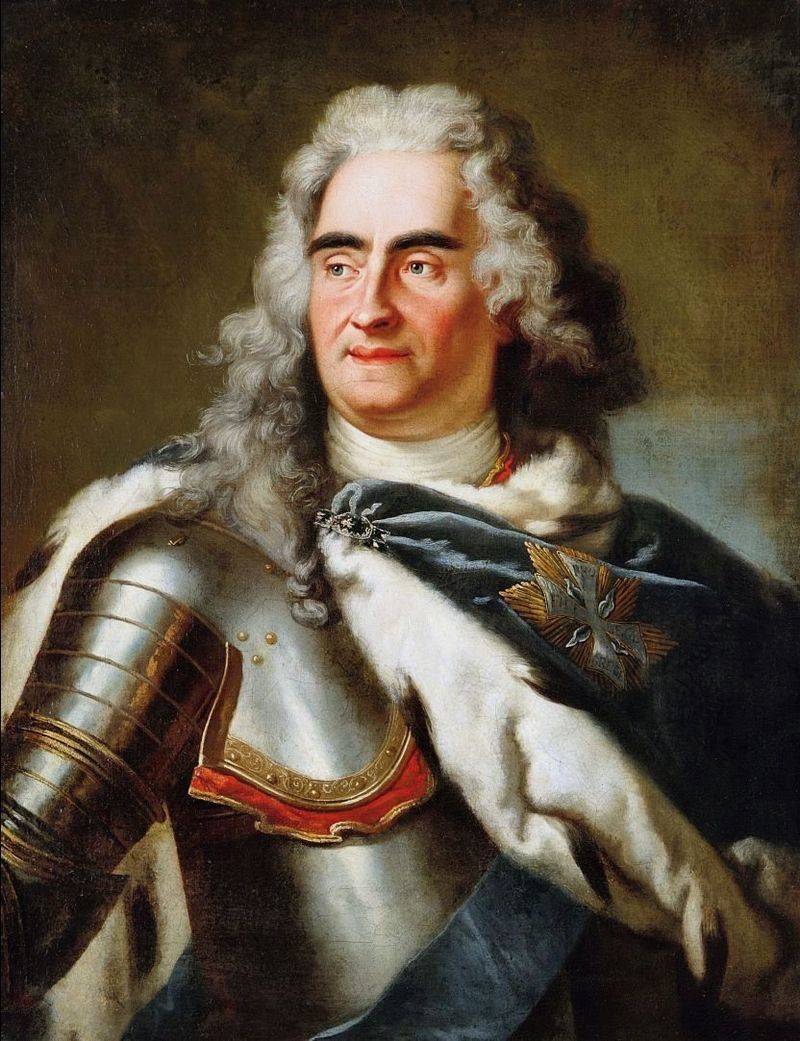Great Embassy of Peter I in England and Austria

Portrait of Peter the Great by Godfried Kneller
Peter in England
Peter decided to go to England. Upon the arrival of the embassy in London in January 1698, a solemn welcome was arranged for him. King Wilhelm III and the Tsar often exchanged visits and each time talked to each other for several hours. They soon became friends.
Peter looked around London for a long time. He visited the Royal Society of Sciences, where he examined things that interested him for a long time, was in the arsenal, in the Tower, at the mint, in the observatory. As in Holland, Peter amazed everyone with his curiosity. But his main occupation, for which Peter arrived in England, was still shipbuilding, the theoretical part of which he so wanted to master. Even in Holland, Peter received a certificate at the shipyard in the ability to build ships, but as the tsar himself said:
Wilhelm admired the activities of Peter and wanted to leave a portrait in memory of his stay in England. Peter agreed, and the best portrait painter in England, Godfried Kneller, painted a portrait of the king. In this portrait, he depicted a handsome young man with a courageous, proud and noble expression on his face, big intelligent eyes looking forward.
But Peter did not make a favorable impression on everyone. A certain Englishman Burnet wrote in his memoirs:
During a visit to the Tower, England's main prison, where, according to Peter, "honest English people", he was not interested in them at all. Coins were also minted in the Tower, the great scientist, physicist and mathematician Isaac Newton led this process at that time. He left Cambridge in 1696 and, having arrived in London, soon became director of the Mint. With his skillful actions, Newton increased the issue of coins eight times. Peter had a long conversation with the famous director of the Mint and was struck by his mind. Peter's curiosity struck Newton as well. From this conversation, Peter learned a lot of information, which he later uses during the monetary reform in Russia.
Peter visited factories, factories, workshops with interest, but he was not at all interested in the laws and state structure of England. Among his entries in the diary about visiting various institutions there is only one dry phrase "were in parliament».

"Old London". Louise Ingram Rayner
Peter visited the parliament during the meeting, with the help of an interpreter he listened to the debate of the parties and said:
But the Parliament did not impress Peter as much as the Tower or the shipyards.
On February 9, from London, Peter settled in Deptford, which is 3 km from the capital. There, the king studied shipbuilding for 2,5 months: practice and theory.
Not far from the Isle of Wight, Wilhelm arranged for Peter a mock naval battle involving twelve large naval ships. Peter from his yacht moved to an 80-gun ship and watched the two rows of ships converge, staging a battle. Peter, struck by the magnificent sight, then exclaimed:
The tsar was impressed by what he saw for a long time and, obviously, in the depths of his soul he dreamed that in the same way the Russian ships would converge in battles with the enemy.

Giovanni Antonio Canaletto. "The River Thames"
Still, Peter had an amazing character. Cruelty, harshness, anger coexisted with curiosity, firmness and great efficiency. All the same Burnet wrote about Peter:
Spending whole days studying shipbuilding, Peter did not forget about the main goal of his journey - he recruited officers, various masters for service in Russia. No matter how hard he tried, Peter did not find a mining engineer either in Holland or in England: he recently received information that iron ore had been found in the Urals. In total, Peter hired about 60 people for the Russian service in England. Hiring so many foreigners for service and sending them to Russia required considerable money, and Peter, with all his economy, began to need them. Therefore, Peter decided to sell the monopoly on the import of tobacco into Russia for 20 pounds to Lord Carmentin. Shortly before this, the tsar allowed the open sale of tobacco in Russia and imposed a duty on it.
Prior to this, the sale of tobacco was banned by the government, but it was still sold secretly. Under Alexei Mikhailovich, nostrils were torn for the sale of tobacco, and adherents of antiquity called it "damned potion." But the open sale of tobacco brought huge profits to the treasury, and according to the agreement, the British had to buy Russian goods with the proceeds from the sale. So the national currency was not taken out of the country.
The decision to sell tobacco - beneficial to the state, has more positive aspects than negative ones. You can’t blame Peter for ordering the abuse of smoking, because before him they also smoked, although tobacco was officially banned.
Peter stayed in England for more than three months and was preparing to go to Vienna. He recognized the advantage of English shipbuilding over the Dutch and decided to follow the example of the British.
On April 21, 1698, after saying goodbye to the English king, the king went to Holland, where an embassy was already waiting for him. From there, Peter immediately went to Austria.
Austria and return to Russia
In Vienna, the embassy received a colder reception than in Holland and England. Emperor Leopold I almost openly mocked Peter, considered himself much higher than the Russian Tsar. It even took Peter a long time to get permission to meet with Leopold.
This meeting took place and lasted only 15 minutes. Peter did not agree on anything with the emperor. Then Peter met with the Empress and the princesses. The meeting took place in the Favorite Castle, and Peter managed to make a favorable impression on them.
The diplomatic mission of the embassy failed completely: Austria made peace with Turkey and prepared for war with Spain. From a cognitive point of view, Peter also did not like Vienna: he did not find anything there that would interest him. From Vienna, Peter was going to go to Venice to continue studying maritime affairs. But the tsar was not destined to visit Venice: on the day of his departure, a Russian messenger arrived in the Austrian capital and gave Peter a letter stating that the rebel archers were going to Moscow.
The king decided to return and immediately set off. For several days he rode without a break, without an overnight stay, making brief stops only to change horses. So from Vienna he rode to Krakow, where he learned that the Streltsy rebellion was suppressed. After this news, Peter went slowly.
In the small town of Rava, not far from Lvov, Peter met with King Augustus II. It was easier for Peter to find a common language with him than with Leopold, because they had a lot in common. They were almost the same age, both were distinguished by high growth and strong physical strength. And, as it turned out, they had a common enemy - Sweden.

August II
The meeting in Rava lasted four days. During this time, there were fun feasts, which often turned into drinking parties, and reviews of the troops, and face-to-face talk about foreign policy. Peter and August agreed on an alliance in a future war against Sweden. The union was concluded orally, without fixing it in the documents. When preparing to go to Moscow, Peter exchanged a hat, camisole and sword with Augustus. He rode slowly, often stopping at the luxurious estates of the Polish lords. On August 25, Peter arrived in Moscow, and this was the end of the great embassy.
Summing up, we can say that the main goal of the embassy - the formation of an anti-Turkish coalition - failed completely. But another goal - attracting specialists to the Russian service and training volunteers - was a success, and it worked out well.
When Peter arrived in Rava, he still hoped that Augustus would support him in the war with Turkey, but when he left, he fully realized the inevitability of war with Sweden. The change in the direction of foreign policy is one of the most important events in the reign of Peter. The war with Sweden will not be easy, the country still had to go through a difficult test.
The journey clearly benefited Peter: he learned a lot, saw a lot for the first time, and finally decided to introduce the innovations he had seen in his own country. After the trip, Peter changed a lot: some even said that the king was replaced abroad.
Peter returned to Russia with the idea of radically changing the country. Many reforms were to be carried out, but on the path of these reforms there were many opponents who were ready to kill or overthrow Peter, and put Sophia on the throne so that everything would be the same.
- Andrey Sarmatov
- https://ru.wikipedia.org https://annapeicheva.ru
- Great Embassy of Peter I in Germany and Holland
Information